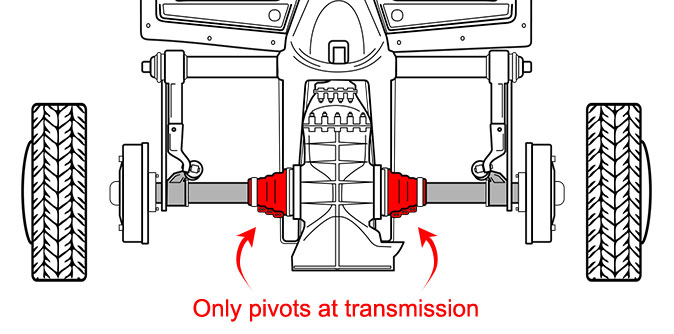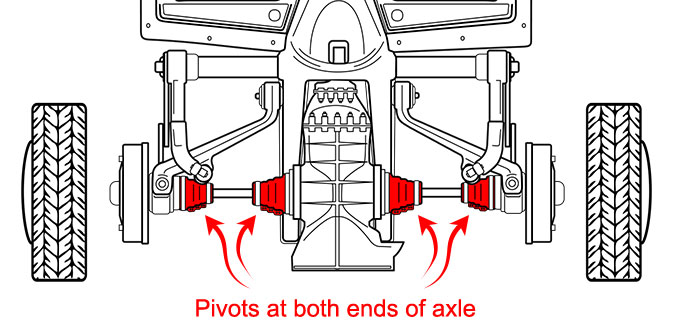




Your cart is currently empty.

Swing axle and I.R.S. refer to the different type of transmissions found on classic VW models. Swing axles are found on early models, while I.R.S. transmissions are found on late model VW's. However, transmissions can be swapped, so you should be aware of what system is in your vehicle. The type of transmission can determine which other parts are needed when it comes time for maintenance or repair.
The Swing-axle "transaxle" rear suspension allows the rear wheels to react to the road independently from opposite rear wheel. Each axle pivots at the transmission out to the wheel, and Volkswagen was among one of the first vehicle manufacturers to offer this type of suspension. It was standard on Beetles and most other models until 1968. Swing axles consist of thick steel tubes, and are known for their strength. Unfortunately since the axles pivot only at the inboard transmission side, not having an outer pivot, the wheels, at the far end of the pivot are very prone to positive and negative camber whenever the suspension is cycled through the travel. If the rear of the car is lowered, the tires will have negative camber, and if the rear suspension is lifted, the tires will have positive camber. Either can lead to premature tire wear.
However, many people love the way negative camber looks on lowered cars. This, along with on lower maintenance, and budget-friendly builds make swing axle suspensions a popular choice amongst VW enthusiast.


IRS transmissions use solid axle shafts to connect the wheels to the transmission via CV joints at either end of the axles. IRS axles easily can be identified by the 2 CV boots on opposite ends of the drive shafts. I.R.S. systems have rear trailing arms which run diagonally from the chassis and connect near the wheel. These trailing arms are what the IRS designation actually refers to, the axles and the suspenion are independent unlike the earlier Swing Axle suspension. IRS suspensions have more articulation which allows the tires to remain more flat through the suspension movement (less camber change). This makes the IRS suspension and transmission design a popular choice for off-roading and daily driving alike.


Copyright © JBugs.
All rights reserved. All images protected by US and International copyright laws. No part of this website may be reproduced, distributed, or transmitted in any form or by any means.
All Prices subject to change without notice or obligation. Not responsible for typographical or photo errors. "Volkswagen", "VW","Beetle", "Super Beetle", "Bus", "Ghia", "Type 2", "Type 3", "Thing", "Rabbit", "Cabriolet", "Jetta", and "Golf" are trademarked by Volkswagen of America and are used for descriptive purposes only.